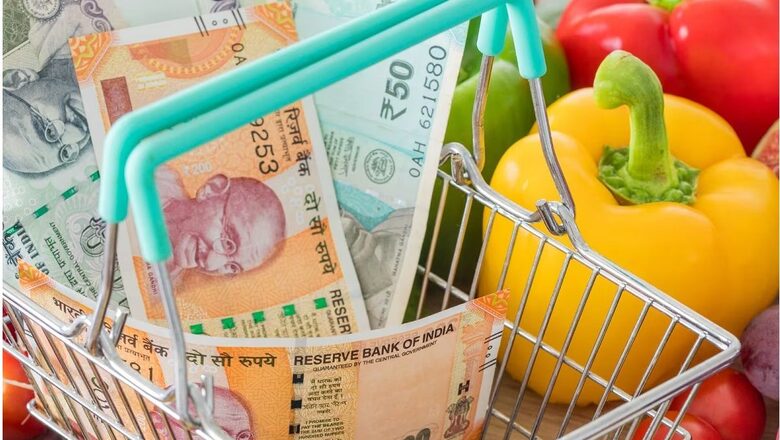
views
A four-month high inflation at 5.7% in December 2023 has again brought the focus on sub-par consumption as consumers in the lower income brackets are forced to cut back on purchases of even staples and daily use items. Persistent inflation is chipping at the overall economic resilience and could force the Reserve Bank of India (RBI) to hold off lowering lending rates for some more time. The only solution to elevated food prices is continued monitoring, and more and timely supply side interventions by the government.
Ratings agency CARE Ratings said in a note that elevated food inflation was a source of apprehension “as prices within the food and beverage sector recorded a growth of 8.7% year on year in December, up from 8% in the preceding month. Despite marginal sequential moderation, food prices remained largely sticky, which drove up the year-over-year growth in December. The enduring inflationary trend in non-perishable food categories such as cereals, pulses and spices raises concerns about the potential broadening of price pressures due to their inherent stickiness”.
Take the case of fruits and vegetables, where inflation continued in double digits, with growth rates of 11.1% and 27.6%, respectively. The only bright spot was a contraction in the oil and fat category. That food inflation continues to upset household budgets is evident from the retail price data collected by the department of consumer affairs. For example, prices of Arhar (or tur) dal, a staple across many states in India, have risen by Rs 44 or by nearly 40% in 12 months till December 31, 2023. The all-India price of the dal was Rs 110.45 on January 1, 2023 but this climbed to Rs 154.66 by December 31. A significant jump came about between September and December, since prices at the beginning of September were about Rs 141 per kg.
DK Srivastava, Chief Policy Advisor at EY, said price increase in the food basket has mainly been seen in vegetables and spices and this is a seasonal variation besides being marginal. But with the decline in Rabi acreage already a matter of concern, food prices are expected to remain elevated for much of 2024. “Wherever shortages are developing in food items, the government should allow imports to ease the situation,” Srivastava said. Pulses, where prices have been climbing, is one such food category.
CARE ratings also said while various supply side measures, such as controlling onion exports and open market sale for essential items, have already been put in place by the government, more and timely supply side interventions are the need of the hour. It also pointed to lower sowing of pulses and cereals in the Rabi crop season (lower by about 5%).
Going ahead, a favourable base effect will persist throughout Q4 FY24 (January-March 2024), helping absorb potential upward risks to price pressures to a certain extent. Moreover, the arrival of fresh crops into the market this quarter is expected to ease price pressures in the food basket. But the inflation pain will continue, with full-year forecast still at 5.4%.
















Comments
0 comment